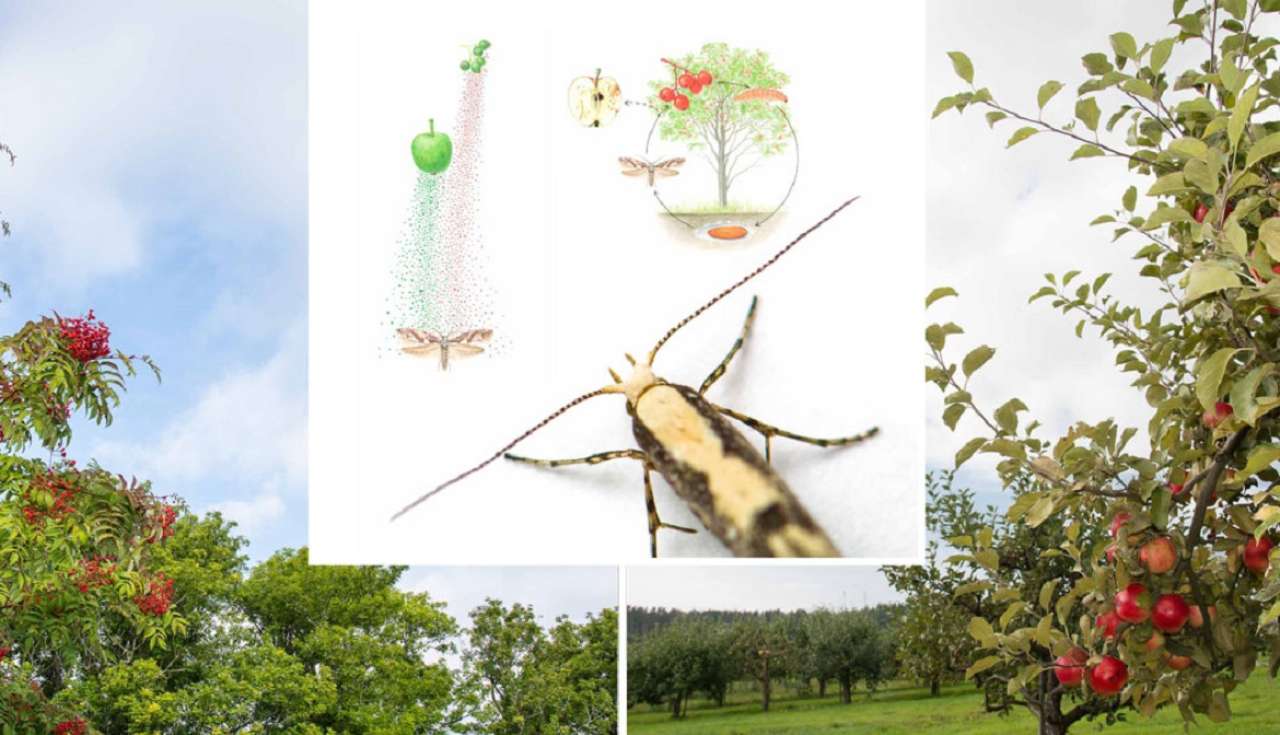Varsling og beslutningsstøtte med planteluktstoffer mot skadedyr i eplehager

Rognebærmøll Argyresthia conjugella med sine vertsplanter rognebær og eple.
Foto/Grafikk: Erling Fløistad
Rognebærmøll angriper eple når det er mangel på rognebær. Med feller, som for rognebærmøllen lukter rogn, kan vi overvåke bestanden og tidspunkt for angrep. Informasjonen brukes av landbruksrådgivningen og epledyrkere for å vurdere om det er behov for tiltak.
Som de fleste insekter har rognebærmøllen ekstremt god luktesans. Hunnen slipper ut luktstoff for å lokke til seg hannen for parring. Slike luktstoffer kalles feromoner og brukes for kommunikasjon mellom individer av samme art. Det er en god strategi for å finne hverandre når man bare er en cm stor og har farger som går i ett med bakgrunnen.
Bruker luktesansen til å finne frem
Hunnen bruker også luktesansen aktivt. Når det er tid for å legge egg, kan hun lukte seg frem til rogn og gode plasser for avkommet å vokse opp. Disse luktstoffene kalles kairomoner og brukes mellom forskjellige arter, som her mellom rognebærmøll og vertsplante.
Rognebærmøllen foretrekker alltid rognebær til egglegging og bruker lukten fra rogn for å velge riktig vertsplante. Når det ikke er rognebær tilgjengelig søker rognebærmøllen opp det nest beste, nemlig epler. Lukten av epler har mange likhetstrekk med rogn, men skiller seg nok ut til at rognebærmøllen kan lukte forskjellen.
Utviklet luktblanding til feller
Ved NIBIO er det utviklet en luktblanding som for rognebærmøllen lukter rogn. Denne blandingen kan brukes i feller som henges i eplefelt for å hjelpe epledyrkere til å vurdere størrelsen på eventuelle angrep av rognebærmøll. Hensikten med dette er å redusere bruken av sprøytemidler i landbruket (Les mer i rapporten"Rognebærmøll - en sulten flyktning i eplehagen" under "Publikasjoner".
KONTAKTPERSON

Gunda Thöming
Forsker
-
Divisjon for bioteknologi og plantehelse
(+47) 920 11 307 gunda.thoeming@nibio.no Kontorsted: Ås - Bygg H7
KONTAKTPERSON

Gunda Thöming
Forsker
-
Divisjon for bioteknologi og plantehelse
(+47) 920 11 307 gunda.thoeming@nibio.no Kontorsted: Ås - Bygg H7
Publikasjoner
Sammendrag
Det er ikke registrert sammendrag
Sammendrag
Det er ikke registrert sammendrag
